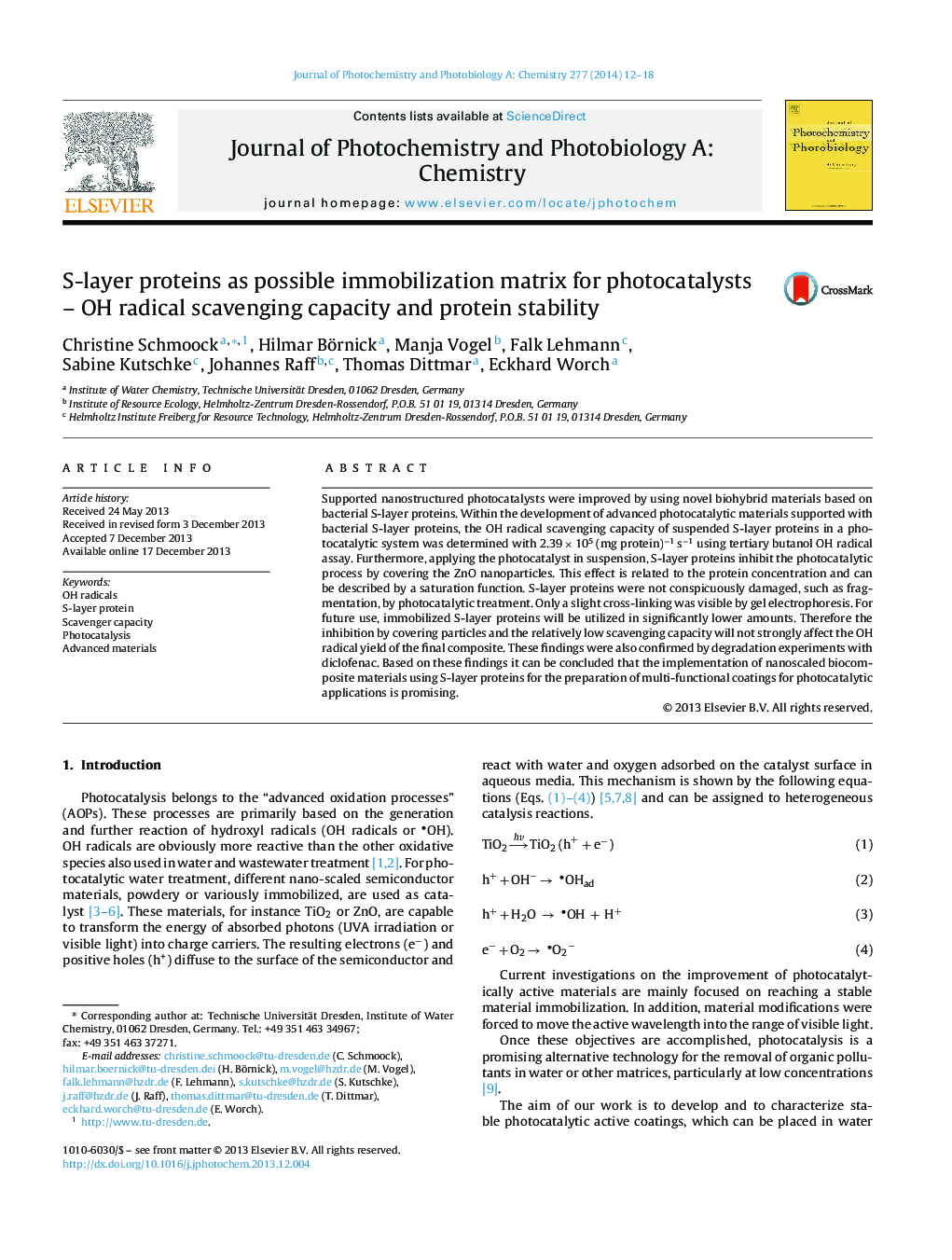| Article ID | Journal | Published Year | Pages | File Type |
|---|---|---|---|---|
| 26755 | Journal of Photochemistry and Photobiology A: Chemistry | 2014 | 7 Pages |
•S-layer proteins were tested as immobilization matrix for photocatalytic materials.•OH radical scavenging of S-layer proteins was determined in a photocatalytic system.•S-layer inhibited the photocatalytic reaction by coating nano particles.•S-layer proteins are slightly cross-linked by photocatalytical treatment.•Increasing stability of protein's framework indicate no damage.
Supported nanostructured photocatalysts were improved by using novel biohybrid materials based on bacterial S-layer proteins. Within the development of advanced photocatalytic materials supported with bacterial S-layer proteins, the OH radical scavenging capacity of suspended S-layer proteins in a photocatalytic system was determined with 2.39 × 105 (mg protein)−1 s−1 using tertiary butanol OH radical assay. Furthermore, applying the photocatalyst in suspension, S-layer proteins inhibit the photocatalytic process by covering the ZnO nanoparticles. This effect is related to the protein concentration and can be described by a saturation function. S-layer proteins were not conspicuously damaged, such as fragmentation, by photocatalytic treatment. Only a slight cross-linking was visible by gel electrophoresis. For future use, immobilized S-layer proteins will be utilized in significantly lower amounts. Therefore the inhibition by covering particles and the relatively low scavenging capacity will not strongly affect the OH radical yield of the final composite. These findings were also confirmed by degradation experiments with diclofenac. Based on these findings it can be concluded that the implementation of nanoscaled biocomposite materials using S-layer proteins for the preparation of multi-functional coatings for photocatalytic applications is promising.
Graphical abstractFigure optionsDownload full-size imageDownload as PowerPoint slide
